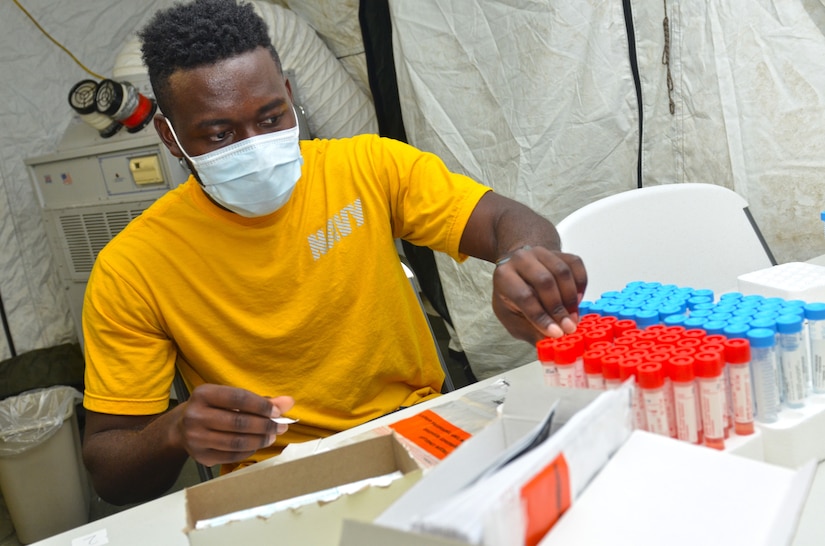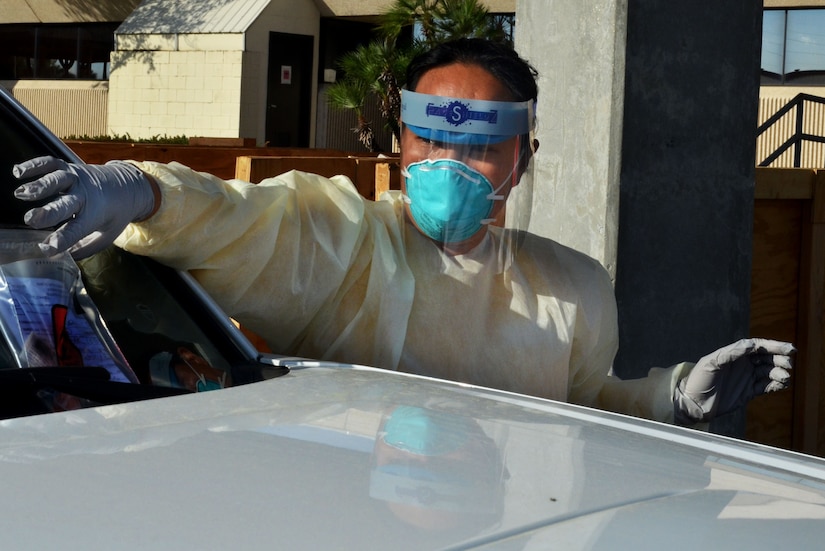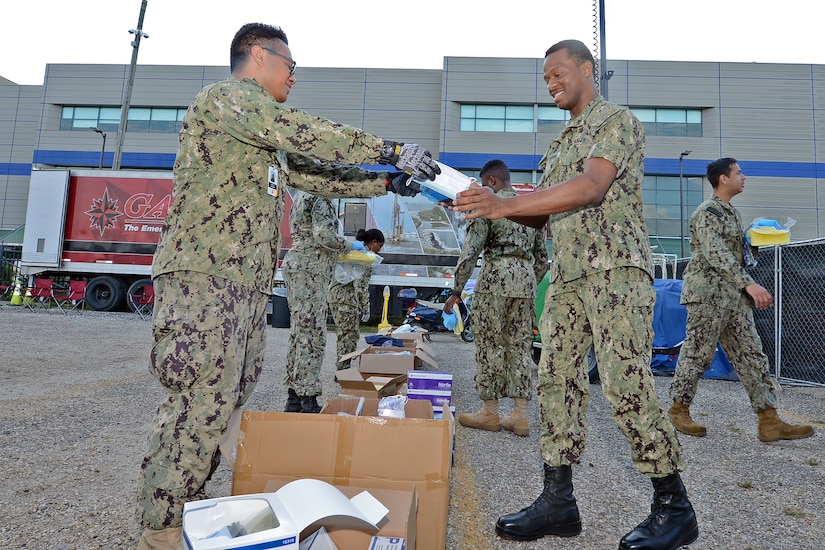May 4, 2021
When the COVID-19 pandemic struck the U.S. in early 2020 and overwhelmed the supply of personal protective equipment, the Defense Department's Manufacturing Innovation Institutes leveraged its public-private partnerships to enable manufacturers to quickly pivot and ramp up production to respond to frontline health care workers' PPE needs and protect Americans against COVID-19 exposure.
The institutes within the MII receive funding and guidance from the DOD's Office of the Undersecretary of Defense for Research and Engineering.

As more people are vaccinated, and the U.S. turns the corner on the disease, a look back at the first year of the pandemic shows the critical role that the MII played in addressing the nation's health and defense needs. The MII's rapid response to the COVID-19 pandemic also shows how it's well-positioned to help mitigate future supply-chain disruptions by applying innovative frameworks that reduce the cost to research, produce and maintain critical technologies and their supply chains.
As part of a whole-of-government effort to build a resilient National Security Innovation Base, the MII is able to quickly and efficiently leverage federal funding and coordinate with the deep and diverse U.S. manufacturing ecosystem to answer federally-sponsored project calls. The MII's flexible business framework enables it to unite funding and manufacturing capabilities with emerging technology ecosystems to accelerate innovative technologies that deliver defense-essential equipment, strengthen local economies, provide educational and workforce development opportunities and solve manufacturing challenges — including those caused by the pandemic. Since the establishment of the first institute in 2012, the federal government has committed almost $1.2 billion in funding to the institutes. A network of over 1,500 organizations from academia, industry and state governments has committed an additional $2 billion in cost share to the MII.
In early 2020, the MII immediately activated its multidisciplinary network of companies and innovators to fill gaps in the PPE supply chain. For example, America Makes, the National Additive MII in Youngstown, Ohio, partnered with several federal agencies to connect the additive manufacturing community with health care providers and communities in need of PPE. Through the National Institutes of Health's 3D Print Exchange (owned and operated by the National Institute of Allergy and Infectious Diseases), America Makes connects manufacturers with free PPE designs that manufacturers can download. As of February, 624 published designs were available on the exchange — 34 designs were optimized for clinical use and 28 were optimized for community use. The designs have been downloaded more than 200,000 times. Through the effort, America Makes assisted frontline workers in obtaining hundreds of thousands of pieces of critical PPE supplies from quality manufacturers across the country.

As a result of America Makes' proactive support in energizing its U.S. community, the DOD subsequently awarded $4.7 million to the institute to enhance and expand its design innovation program, increasing the DOD's ability to rapidly vet, certify and field PPE designs to quickly match supply with demand and recommend improvements. This is one of 13 MII COVID-19 response projects that the DOD sponsored through $60.7 million in funding through the Coronavirus Aid, Relief, and Economic Security Act, and is a prominent example of how the MII provides innovative and accelerated production approaches.
Some of the institutes have also answered the call to use their technologies and networks to respond to the pandemic. Along with the Massachusetts Technology Collaborative, the Advanced Functional Fabrics of America MII has helped administer $5.6 million in funds for PPE through the Massachusetts Manufacturing Innovation Initiative, which is a special partnership between the state of Massachusetts and four of the institutes. AFFOA also leads the development of the first PPE product lifecycle management system, which will allow designers and developers to capture specifications to recreate products and enable the creation of a blueprint for government production of N95 masks to mitigate future shortages. In another effort, AFFOA established a member-based N95 testing network that measured the performance of more than 1,000 types of N95 and KN95 masks and materials.
MII's Manufacturing Times Digital, dubbed MxD, in Chicago, and the Lightweight Innovations for Tomorrow Institute, also known as LIFT, in Detroit, produced and donated PPE to local area hospitals and community centers. Additionally, MxD is executing a supply-chain risk alert project that seeks to leverage machine learning and artificial intelligence capabilities to provide end-to-end visibility into manufacturing supply chains, thereby identifying vulnerabilities, foreign dependencies and potential future disruptions.

BioFabUSA, the MII focused on large-scale manufacturing of engineered tissues and regenerative medicine research, is leading an effort to design and implement a demand forecasting dashboard that will allow medical systems to accurately predict the demand for medical supplies and resources during surges, such as the pandemic. Miami's Jackson Memorial Hospital has already instituted the current version of the demand dashboard to help address critical impacts of surges in COVID-19 cases in the region.
The success of these and other MII COVID-19 responses culminated in a March 24 briefing to Congress. The Manufacturing USA Network — whose members include the nine MII and seven other institutes associated with the Departments of Commerce and Energy — released a 36-page report highlighting the MII's manufacturing leadership during the pandemic.
The MII's effective, agile actions in response to evolving COVID-19
impacts demonstrates its value to U.S. well-being and national
security. Ensuring the long-term health of the defense industrial base
and U.S. technological superiority depends on continued support for the
MII and the transformational procurement pathways it offers so that the
U.S. is ready to face future supply chain disruptions and technology
insertion challenges.






No comments:
Post a Comment